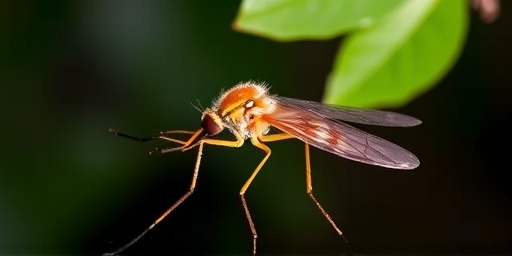HONOLULU, Hawaii – The Hawaii Department of Health (DOH) has confirmed the state’s 14th Dengue case of 2025, a travel-related infection that has prompted an immediate mosquito control response in affected communities. Officials revealed the diagnosis on Thursday, highlighting the ongoing risk of local transmission from the invasive Aedes mosquitoes thriving in Hawaii’s warm climate.
This latest case involves an individual who recently returned from a Dengue-endemic region in the Pacific, underscoring how travel-related infections continue to fuel Hawaii’s Dengue uptick. With no evidence of local acquisition yet, the DOH is urging residents and visitors to eliminate standing water and use repellents to prevent the virus from establishing a foothold.
Breaking Down the Latest Travel-Related Dengue Case
The patient, whose identity and exact travel history remain undisclosed for privacy reasons, sought medical attention after developing classic dengue symptoms including high fever, severe headache, joint pain, and a characteristic rash. Testing at a state laboratory confirmed the dengue virus, specifically the DENV-1 serotype, which has been circulating in parts of Southeast Asia and the Pacific Islands.
“This case serves as a stark reminder that dengue doesn’t respect borders,” said Dr. Kenneth Fink, chief of the DOH Disease Outbreak Control Division. “Our surveillance systems caught it early, but every imported case raises the stakes for public health in Hawaii.”
According to DOH data, all 14 cases reported this year are classified as travel-related, with origins traced to countries like Indonesia, the Philippines, and French Polynesia. The infected individual resided on Oahu upon return, triggering vector control operations in their neighborhood to target Aedes aegypti and Aedes albopictus mosquitoes, the primary carriers in Hawaii.
Mosquito Control Teams Swing into Action Across Oahu
In response to the 14th case, DOH vector control teams were deployed within 24 hours to the patient’s residential area in Honolulu. Crews conducted door-to-door inspections, applied larvicides to potential breeding sites, and fogged public spaces with adulticides. “We’re treating storm drains, planters, and any containers holding water,” explained Sarah Nakamura, a DOH entomologist leading the effort.
Mosquito control efforts extended to nearby parks and schools, where over 200 properties were surveyed. Preliminary findings revealed dozens of breeding hotspots, including discarded tires and clogged gutters—common culprits in urban Hawaii settings. The operation mirrors responses to prior cases, but officials note increased intensity due to the rising case count.
Historical context adds urgency: In 2019, Hawaii recorded its largest local outbreak with 368 cases, costing millions in response efforts. This year’s pace—14 cases by mid-year—suggests a potential trajectory toward similar numbers if unchecked. The DOH has allocated an additional $500,000 from state funds for expanded mosquito control, including drone surveillance for hard-to-reach areas.
- Key Actions Taken: Larvicide treatments in 150+ sites
- Adult mosquito fogging in 5-mile radius
- Public education flyers distributed to 1,000 households
- Partnerships with local businesses for property treatments
Hawaii’s 2025 Dengue Tally Climbs Amid Tourist Surge
January through June 2025 has seen a 40% increase in dengue cases compared to the same period in 2024, when Hawaii logged just 10 travel-related infections. The DOH attributes this rise to record tourism—over 10 million visitors in the first half of the year—and heightened global dengue activity fueled by El Niño weather patterns.
Island-by-island breakdown reveals Oahu leading with 7 cases, followed by Maui (4), Big Island (2), and Kauai (1). No hospitalizations have been reported this year, but health officials warn of severe dengue risks, including plasma leakage and organ impairment, which affect about 5% of cases.
“Tourism is our economic lifeline, but it imports risks like dengue,” noted State Epidemiologist Dr. Diana Chung. “We’ve enhanced airport screenings and partnered with airlines for passenger alerts on symptoms.” Comparative data from the CDC shows U.S. territories like Puerto Rico grappling with thousands of cases annually, a cautionary tale for Hawaii.
| Year | Total Dengue Cases | Travel-Related | Local Transmission |
|---|---|---|---|
| 2023 | 6 | 6 | 0 |
| 2024 | 22 | 22 | 0 |
| 2025 (YTD) | 14 | 14 | 0 |
Source: Hawaii DOH. YTD = Year-to-Date as of June 2025.
Residents and Visitors Get Clear Prevention Directives
To combat the threat, the DOH issued refreshed public health guidelines emphasizing the “4D” strategy: Drain, Dress, Defend, and Detect. Residents are advised to tip out water from flower pots weekly, wear long sleeves during dawn and dusk, apply EPA-registered repellents like DEET or picaridin, and monitor for symptoms post-travel.
- Eliminate Breeding Sites: Empty birdbaths, buckets, and plant saucers every few days.
- Use Barriers: Install screens on windows and doors; use mosquito nets for outdoor sleeping.
- Protect Skin: Reapply repellent every 4-6 hours; treat clothing with permethrin.
- Seek Care Early: Contact a doctor if fever persists over 102°F with pain behind the eyes.
Community workshops are scheduled across islands, with virtual sessions via Zoom for remote participants. Schools have integrated dengue education into curricula, reaching 50,000 students. Visitor impacts include hotel mandates for daily room checks and beachfront repellent stations.
“Empowering the public is our best defense,” said Community Health Director Mia Lopez. “Simple actions can prevent Hawaii from mirroring outbreaks in other tropical paradises.”
Forecasting Dengue Risks and Long-Term Strategies Ahead
Looking forward, meteorologists predict a wetter summer due to La Niña influences, ideal for mosquito proliferation. The DOH plans to expand its mosquito trap network from 500 to 1,200 sites by year-end, incorporating AI-driven analysis for real-time hotspots.
Federal support from the CDC includes $2 million in grants for vaccine trials—though no dengue vaccine is yet licensed for routine U.S. use—and genomic sequencing to track virus strains. Local lawmakers are pushing Bill HB-2025 for stricter regulations on imported plants, potential mosquito breeders.
Experts like University of Hawaii entomologist Dr. Ryan Wallace foresee challenges: “Climate change extends mosquito seasons, and air travel accelerates spread. Hawaii must invest in sustainable control beyond reactions.” Public compliance will be key; past surveys show 70% adherence to tips drops vigilance in low-case periods.
Stakeholders anticipate no immediate local transmission but stress vigilance. Travelers to dengue hotspots are now required to complete a digital health declaration upon Hawaii arrival, flagging symptoms for rapid testing. As cases mount, Hawaii’s public health infrastructure stands tested, balancing aloha spirit with proactive defense against this persistent tropical foe.
The DOH hotline (808-586-4410) offers free consultations, and updates are posted at health.hawaii.gov/docd. Islanders are encouraged to report mosquito hotspots via the new mobile app, fostering a community-wide shield against dengue’s spread.









